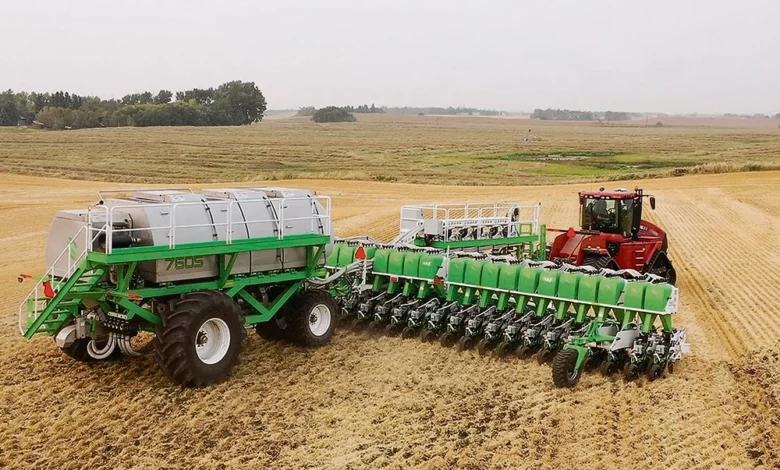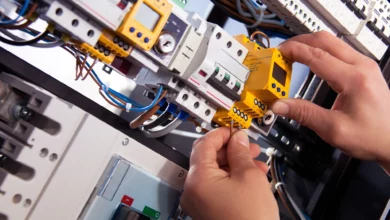Seeders: Enhancing Agriculture | Advantages and Types

Introduction to Seeders
Seeders, in particular, play a crucial role in modern agriculture, enabling farmers to plant seeds quickly and effectively, leading to higher yields and better crop growth.
The Importance in Agriculture
Seeders are agricultural equipment designed to sow seeds directly into the soil, ensuring even distribution and optimal seed-to-soil contact.
This method of planting is far more efficient than manual sowing and can cover large areas in a shorter time. The use has revolutionized the agricultural industry by boosting productivity and reducing labor-intensive tasks.
Different Types
Hopper
Hopper seeders are among the most common types used by farmers. They consist of a large hopper that holds seeds, which are then distributed through various mechanisms such as gravity or a mechanical dispenser. Hopper seeders are suitable for various seed types and are relatively easy to operate.
Air Seeders
Air seeders utilize air pressure to distribute seeds evenly across the field. They are popular for their precision and ability to handle large-scale planting operations.
Air seeders are often equipped with advanced technology, allowing farmers to adjust seed rates and monitor planting progress.
Drop Seeders
Drop seeders are simple and affordable options for small-scale farming. They work by dropping seeds individually into the soil at specific intervals.
While they may not be as fast as other types, they are still efficient for certain crops and farming practices.
Advantages of Using
Seeders offer several benefits that contribute to their widespread use in agriculture:
Time Efficiency: Seeders enable farmers to cover large areas quickly, saving valuable time during the planting season.
Consistent Seed Distribution: Proper seed distribution leads to uniform crop growth, maximizing overall yield.
Reduced Labor Costs: Using seeders decreases the need for manual labor, reducing expenses for farmers.
Improved Crop Success: With precise seed placement, they promote better germination rates and healthier crop development.
Tips for Proper Seeder Usage
To make the most of the seeders and ensure successful planting, farmers should consider the following tips:
Preparing the Soil
Before using a seeder, it’s essential to prepare the soil adequately. Proper soil tilling and fertilization contribute to better seed-to-soil contact and promote optimal seed growth.
Correct Seed Depth
Different crops require different planting depths. Understanding the specific requirements of each crop will result in better yields and healthier plants.
Proper Calibration
Calibrating the seeder correctly ensures that the desired number of seeds is distributed per area. This prevents over or under-seeding, maximizing seed usage.
Seeders and Crop Diversity
They play a crucial role in promoting crop diversity. By allowing for efficient planting, farmers can easily switch between different crops during various growing seasons.
Crop rotation helps maintain soil fertility, reduces pest and disease pressure, and contributes to sustainable agriculture.
How They Impact Farming Efficiency
The adoption of seeders has significantly improved farming efficiency.
By reducing the time and labour required for planting, farmers can focus on other essential tasks such as crop maintenance and harvesting. This leads to increased productivity and profitability in the agricultural sector.
Environmental Benefits
They contribute to environmental sustainability by reducing soil erosion and minimizing the use of harmful chemicals.
Precision planting ensures that seeds are placed at the correct depth, preventing soil disturbance and promoting healthier soil structure.
In Modern Agriculture
Modern agriculture heavily relies on technology to meet the world’s growing demand for food. Seeders have evolved with innovative features like GPS guidance systems, variable rate seeding, and data analytics.
These advancements have revolutionized farming practices and paved the way for more efficient and sustainable agriculture.
Technological Advancements
The continuous advancement of technology has led to smart seeders equipped with artificial intelligence and machine learning capabilities.
These intelligent seeders can analyse data from various sources, optimize planting patterns, and adjust seeding rates on the go, further improving crop yield and resource utilization.
Common Seeder Issues and Solutions
Like any agricultural equipment, they may encounter issues during operation. Some common problems include clogging, improper seed depth, and calibration errors.
Regular maintenance, thorough cleaning, and following manufacturer guidelines can help address these concerns effectively.
Maintaining for Longevity
Proper maintenance is essential to prolonging the life of seeders. Regular inspections, lubrication, and timely replacement of worn-out parts are crucial to ensure consistent performance and avoid costly breakdowns.
The Future in Agriculture
As agriculture continues to evolve, the future of seeders looks promising. Advancements in robotics, automation, and sustainable practices will further enhance the capabilities of seeders, making them indispensable tools for farmers worldwide.
Conclusion
Seeders have transformed the agricultural landscape, streamlining planting processes and increasing crop yield.
With their efficiency, precision, and role in promoting sustainable farming practices, they have become vital assets for modern farmers.
Embracing the latest technological innovations and best practices in seeder usage will continue to drive agricultural productivity and support global food security.
For more, check the rest of our blog.




